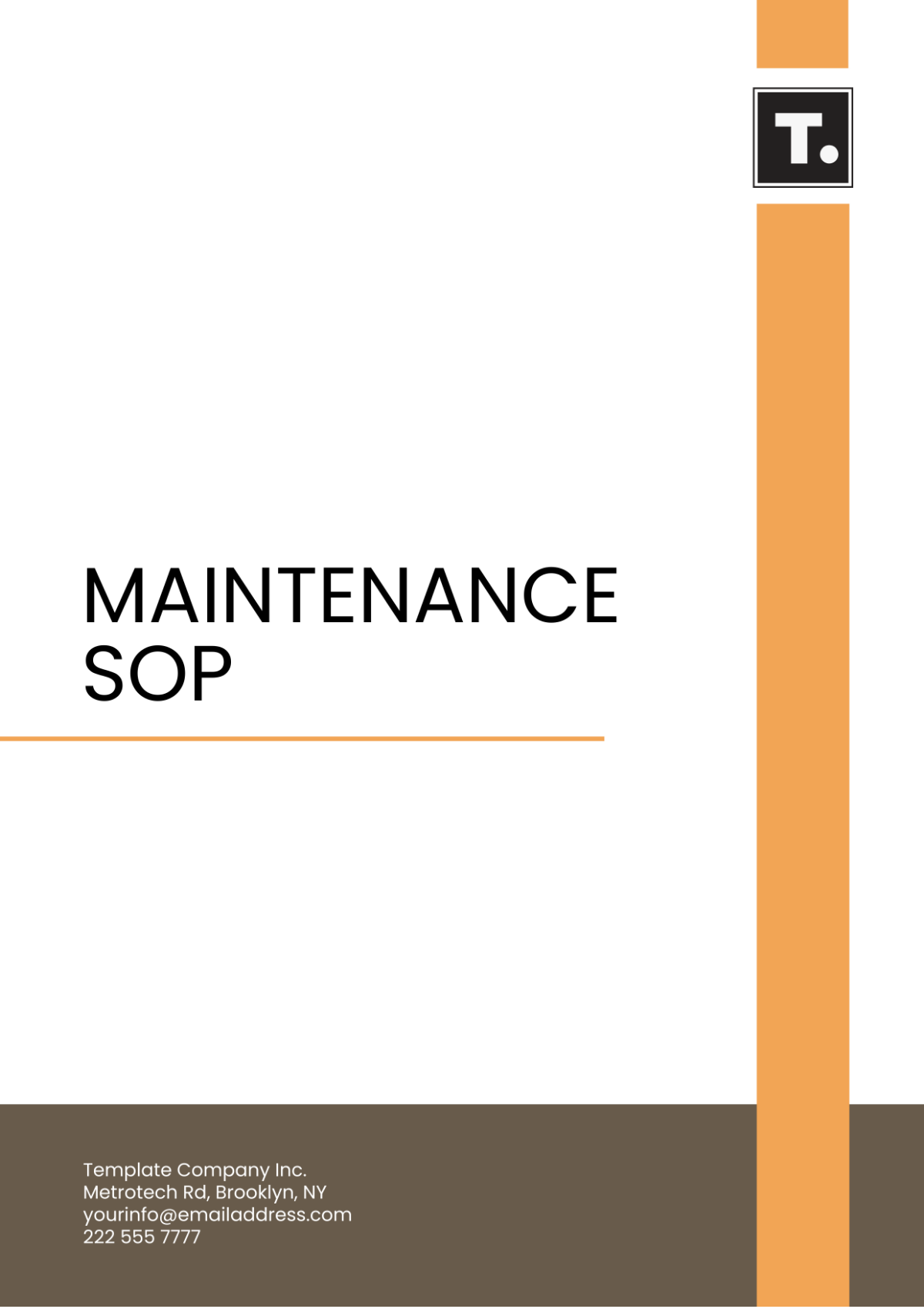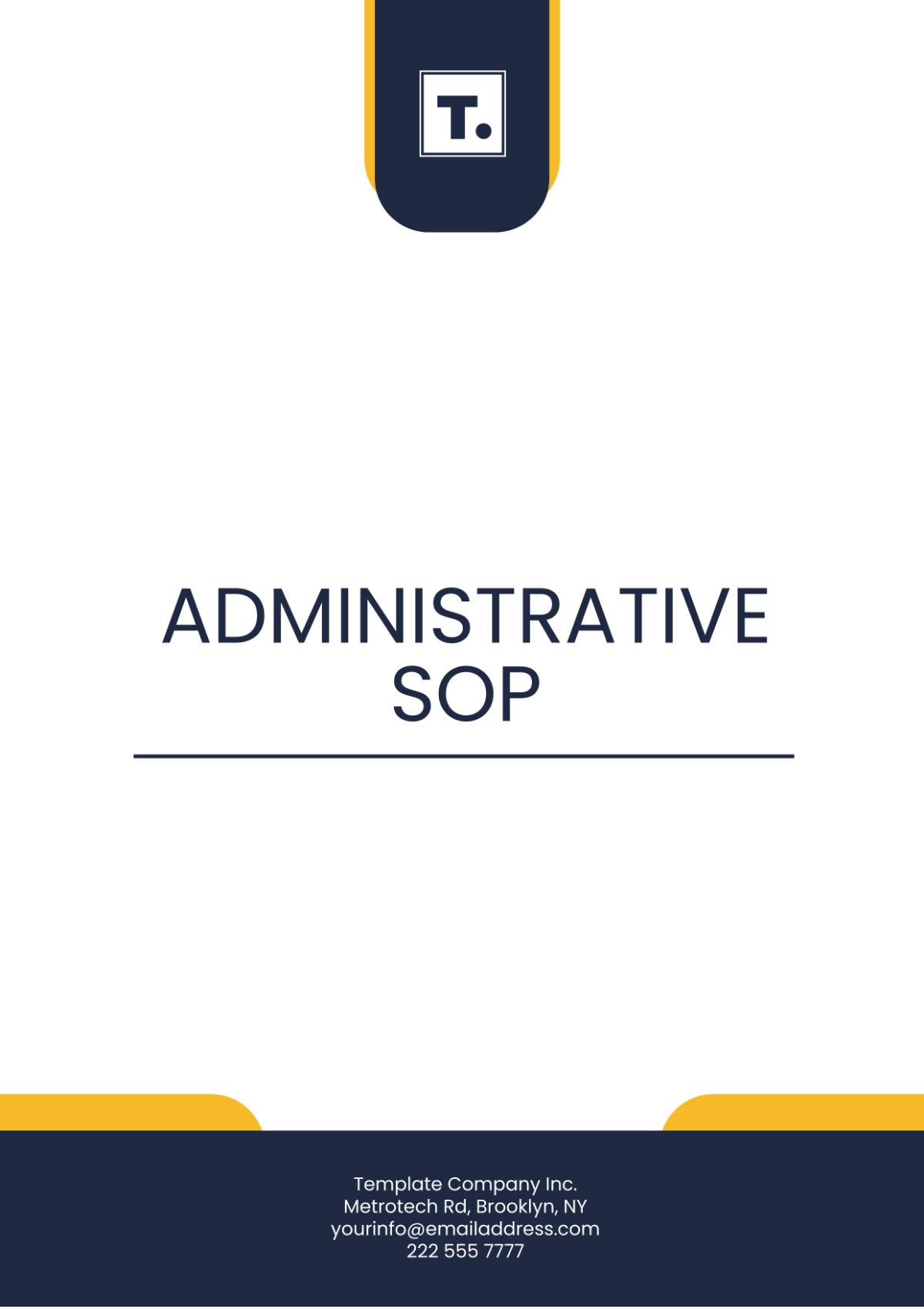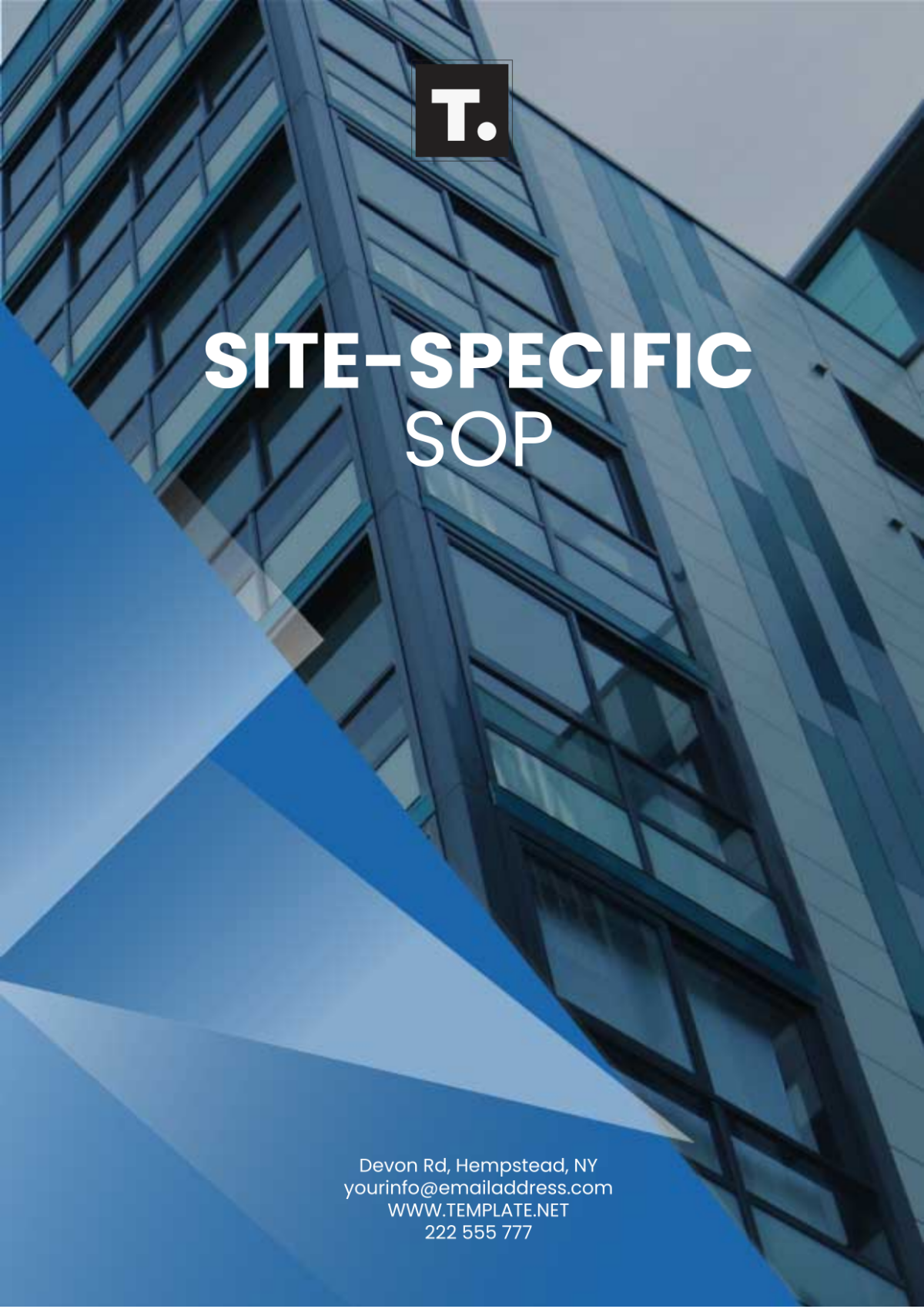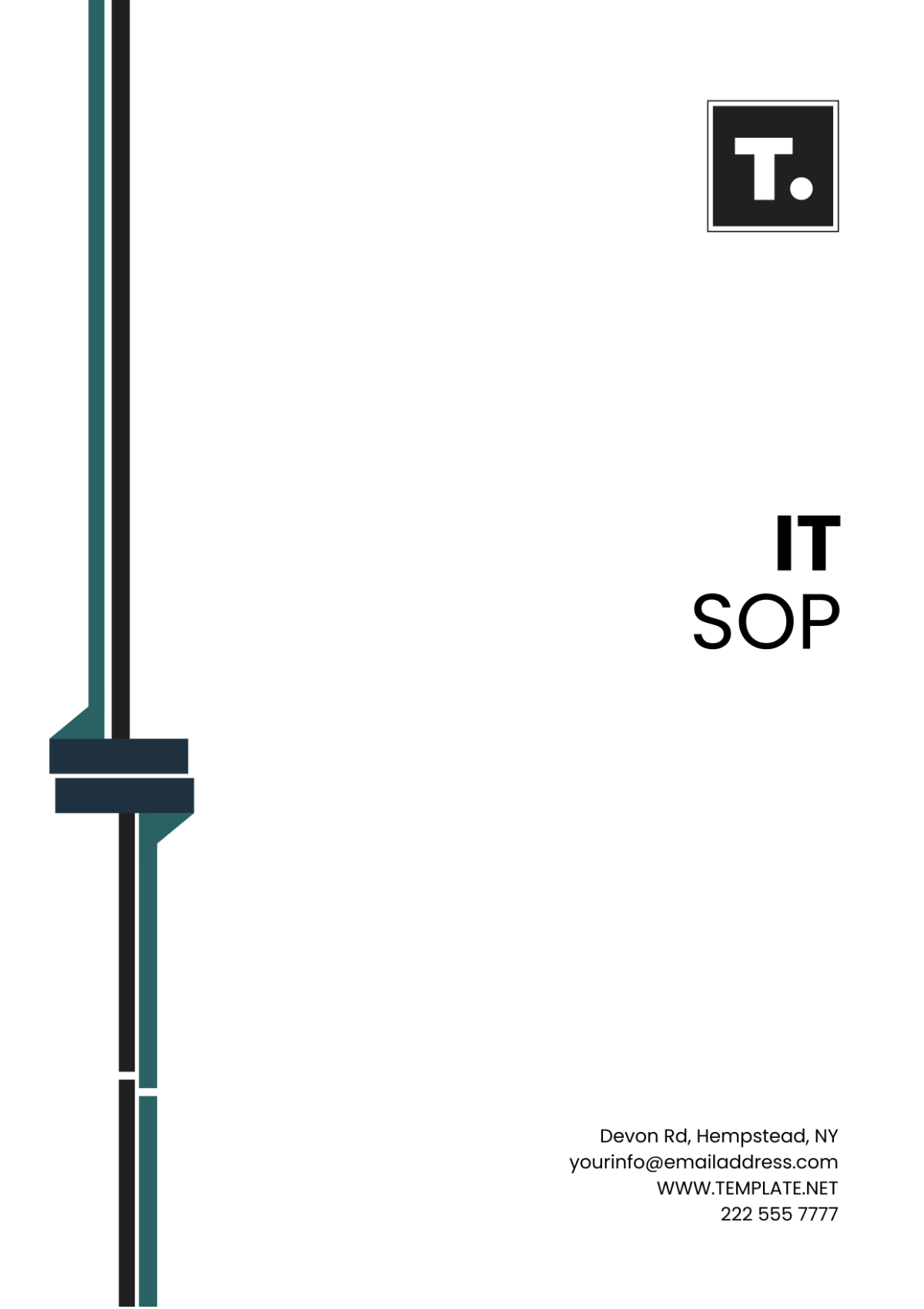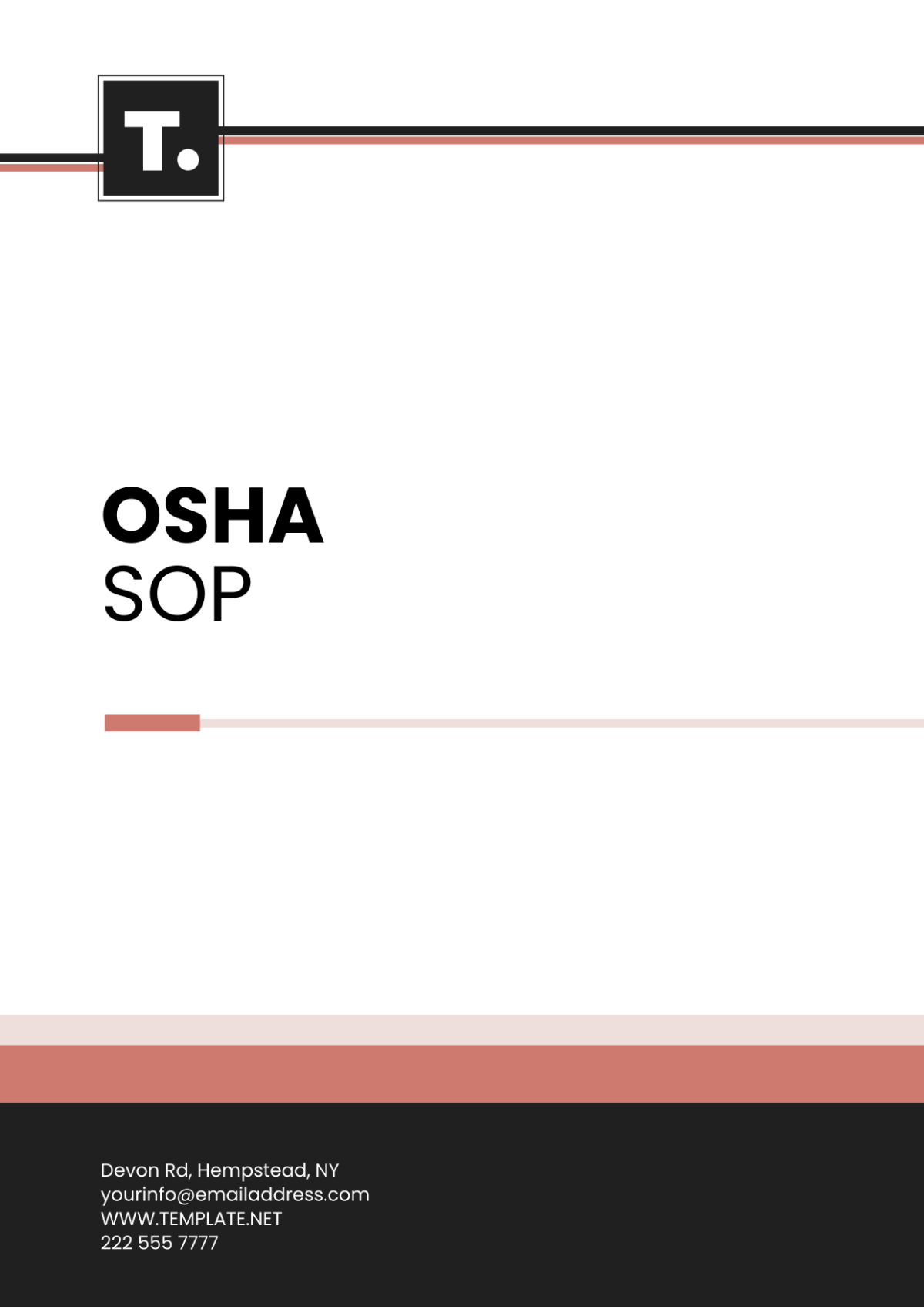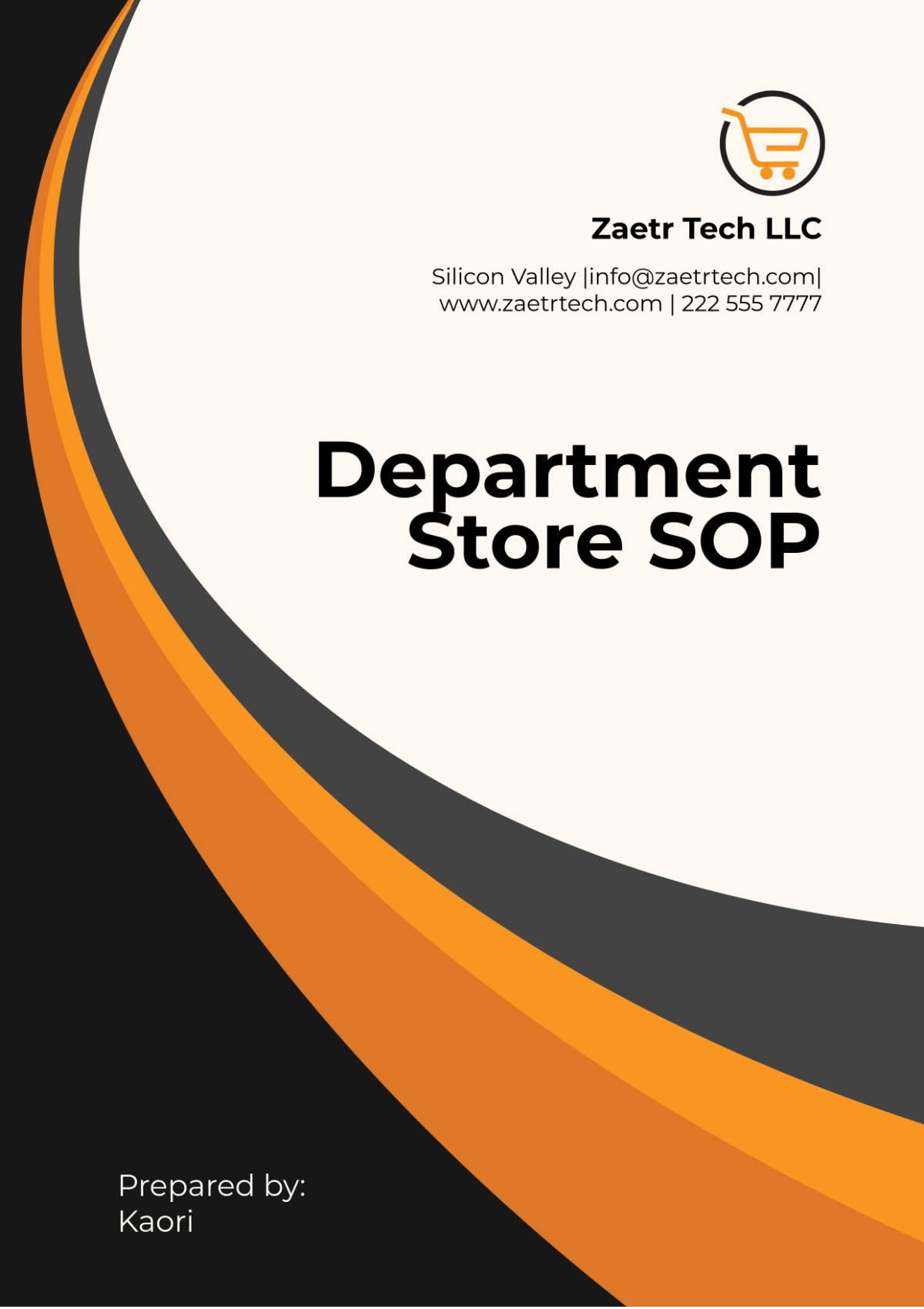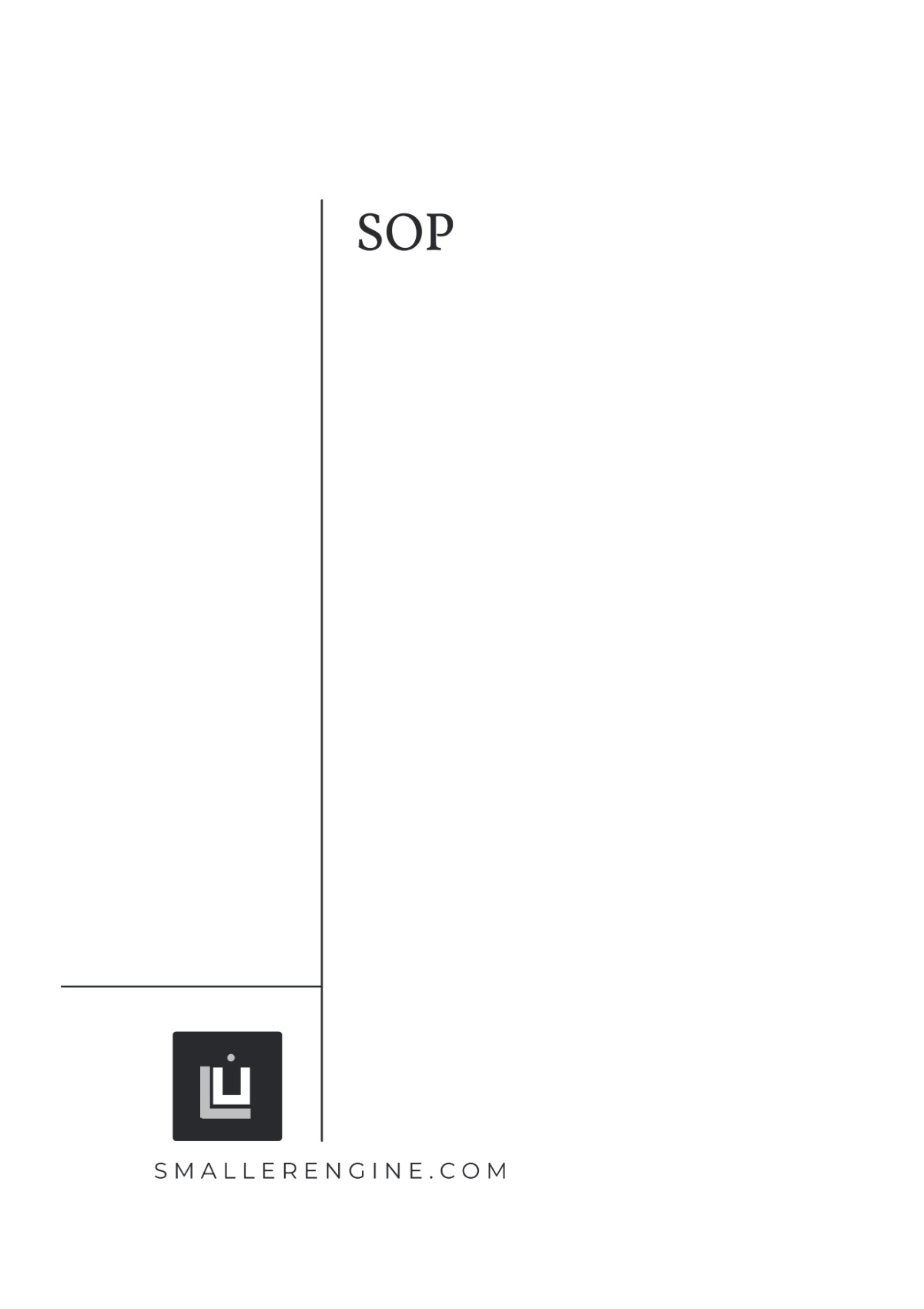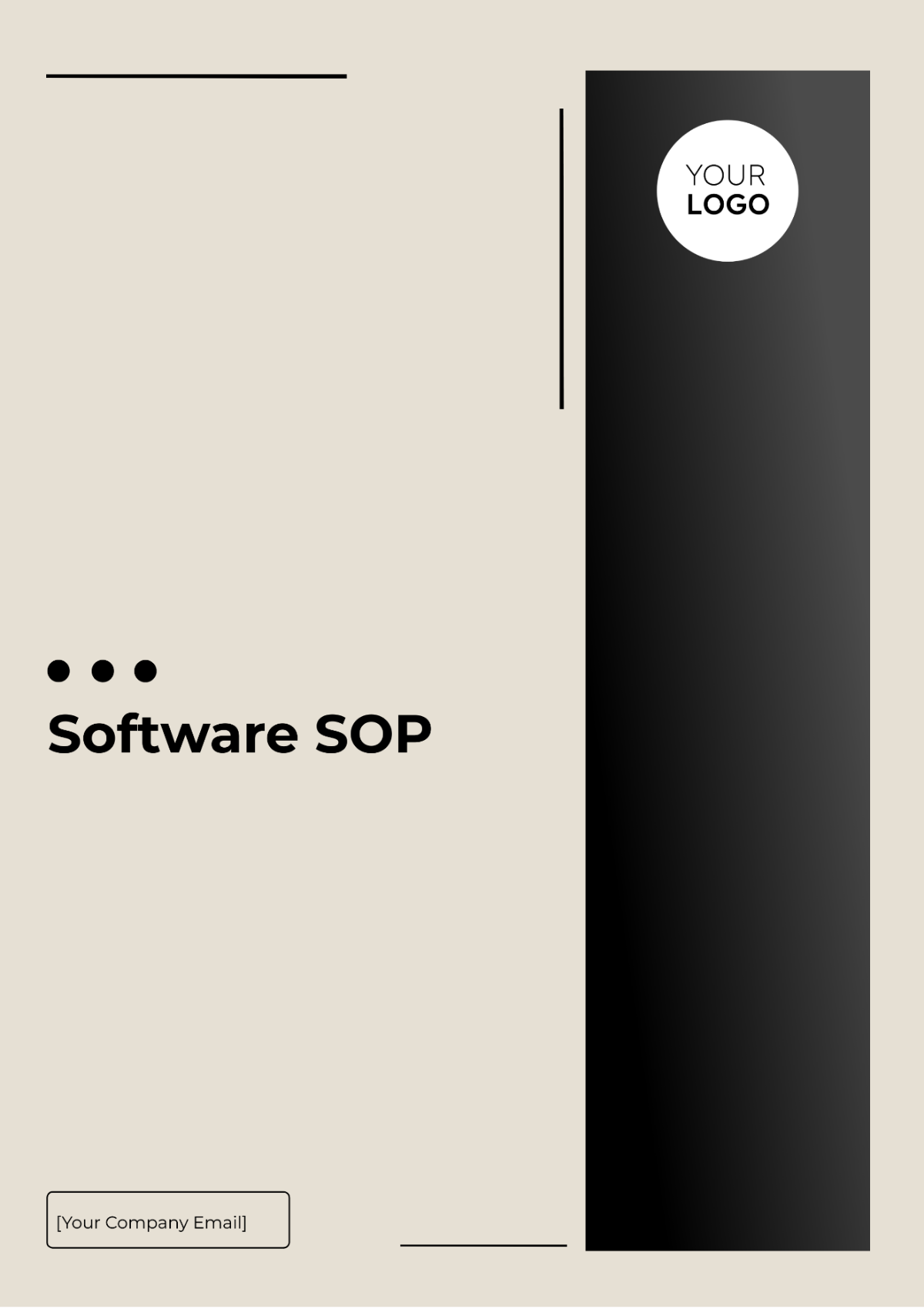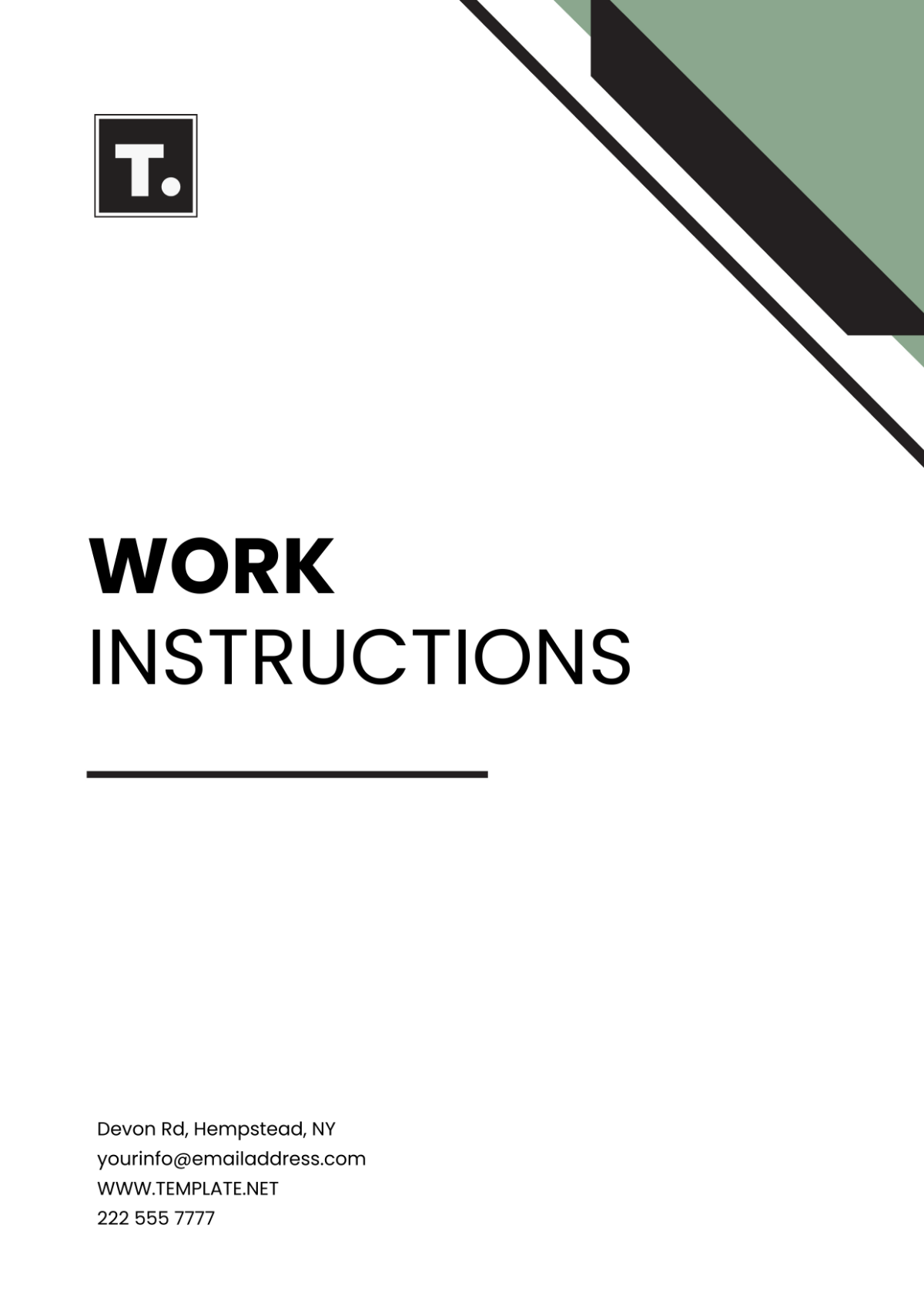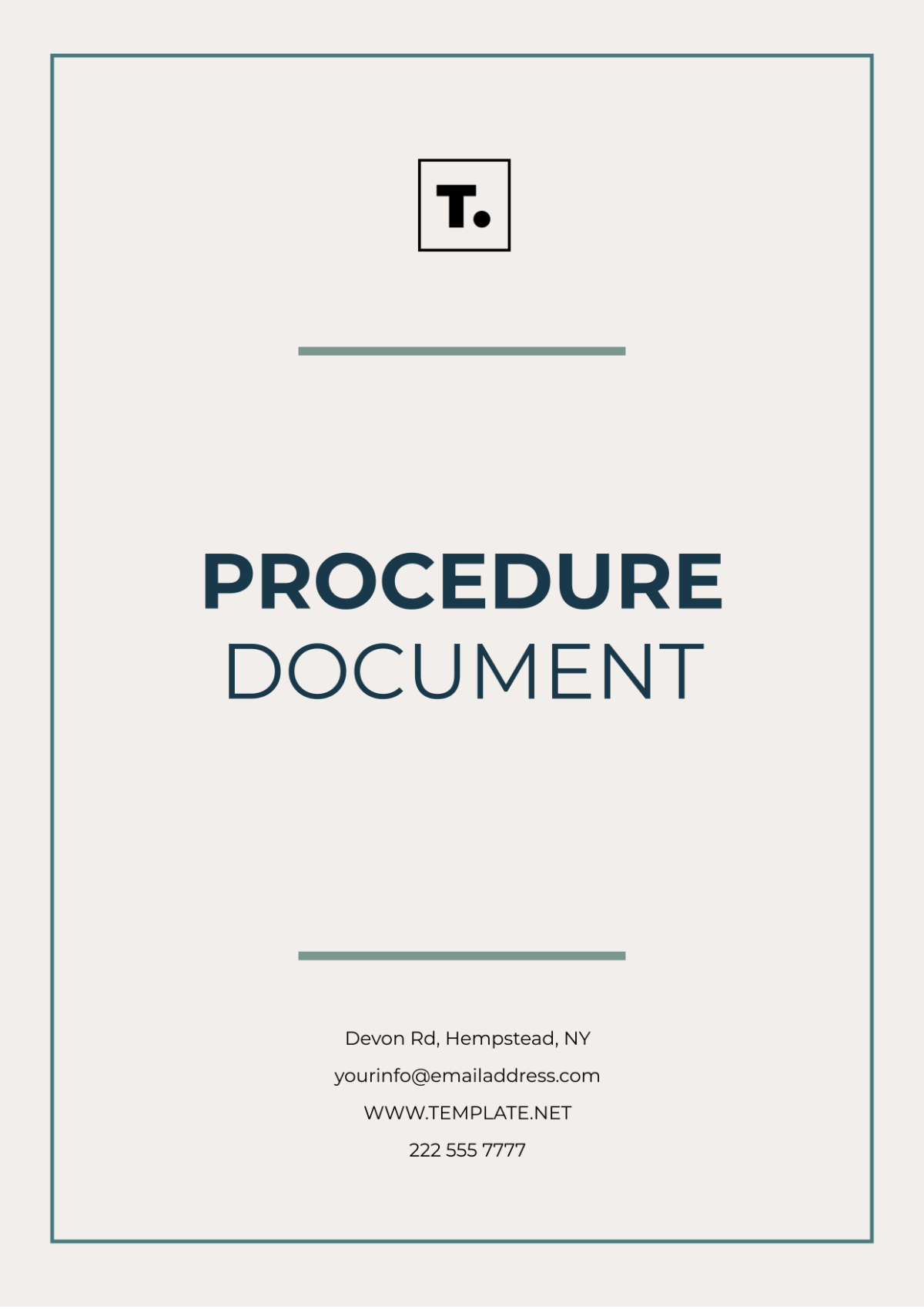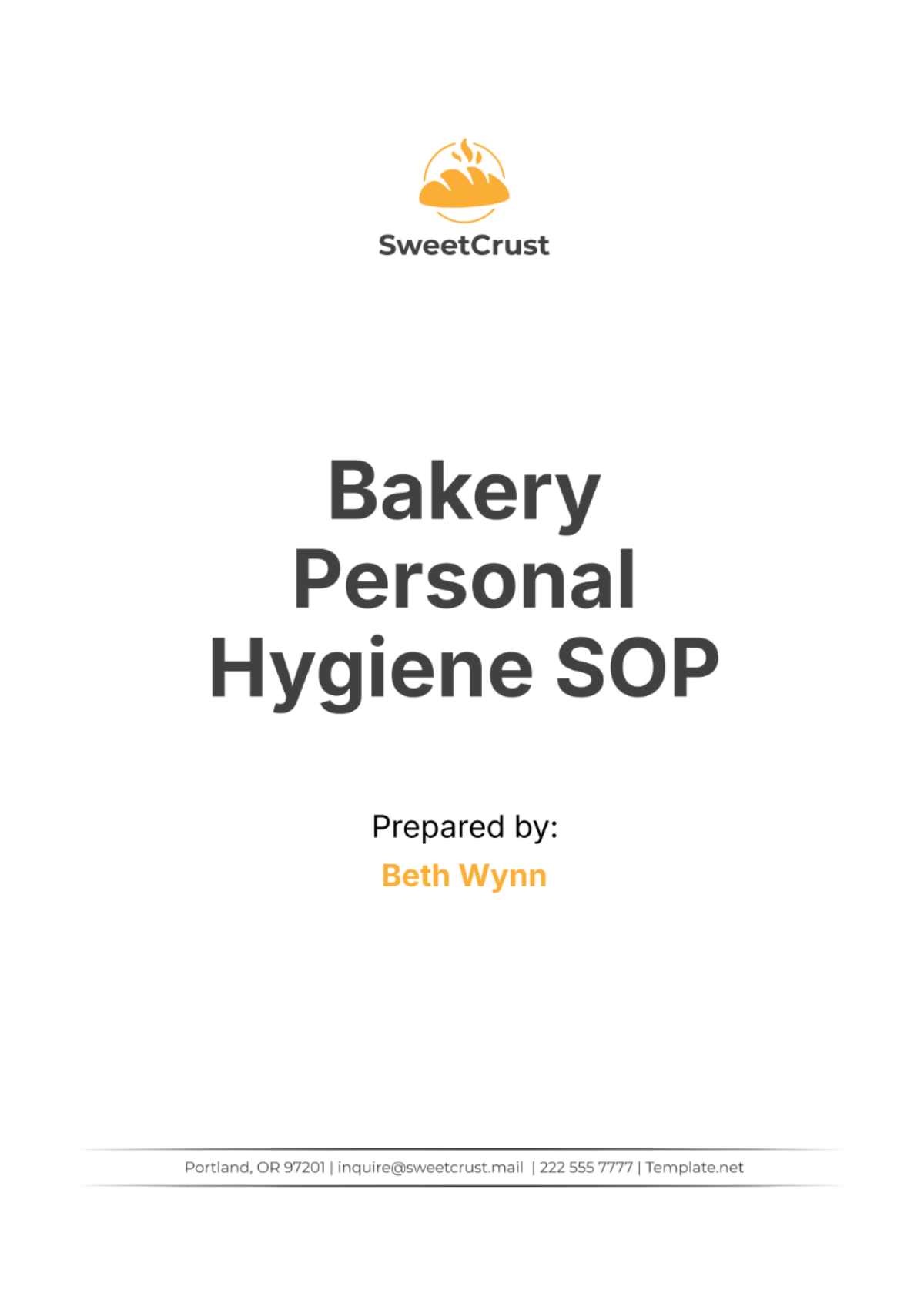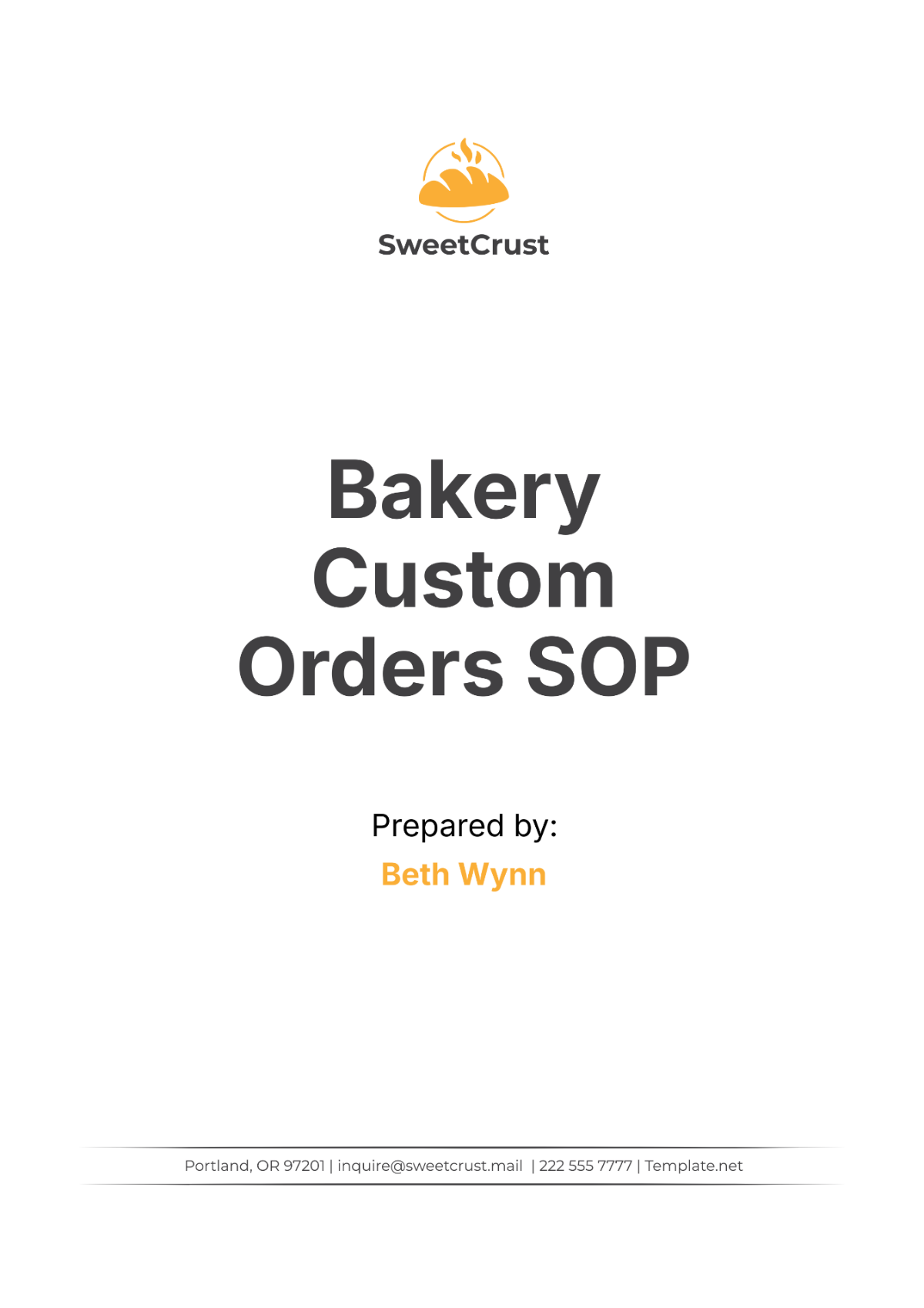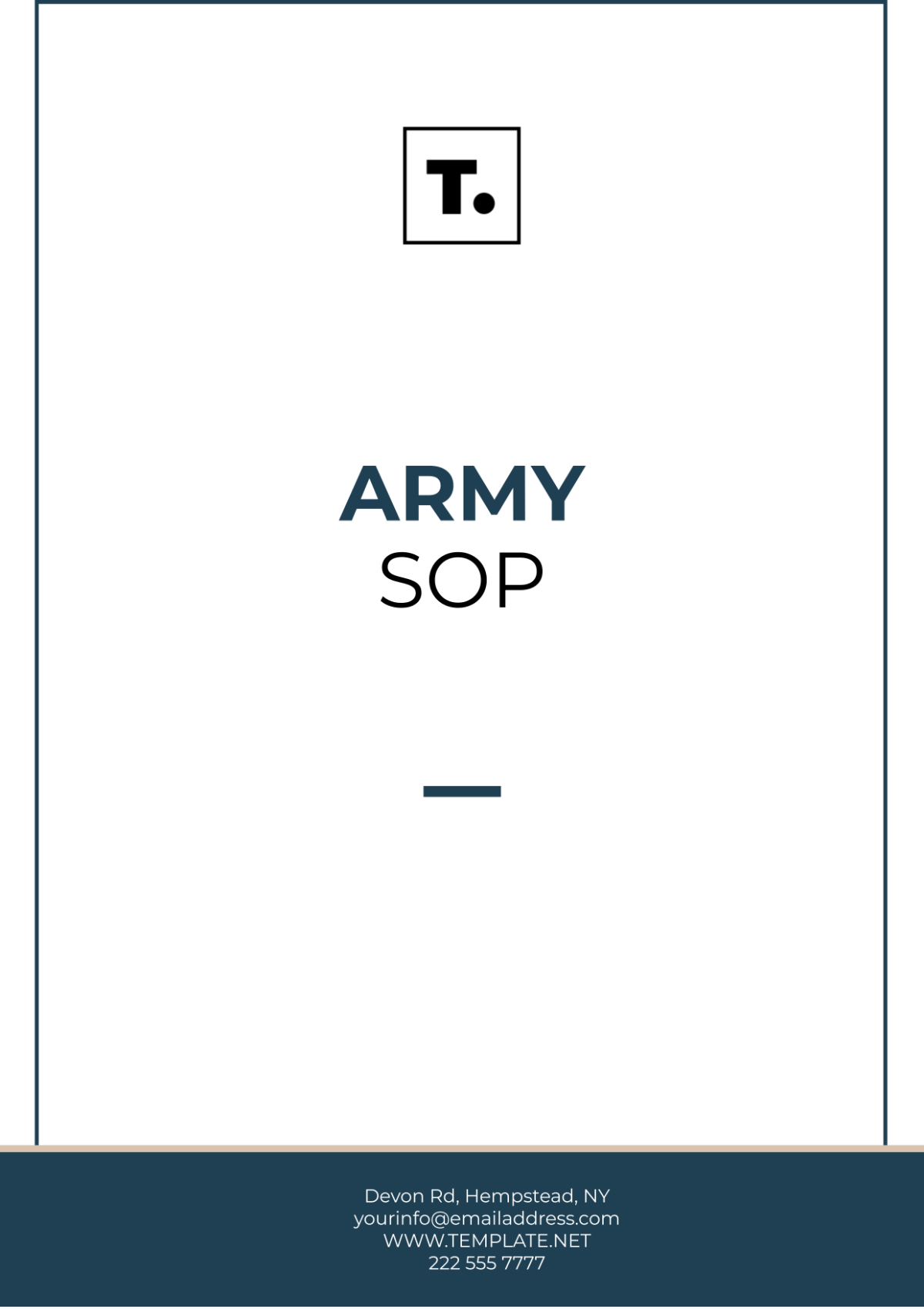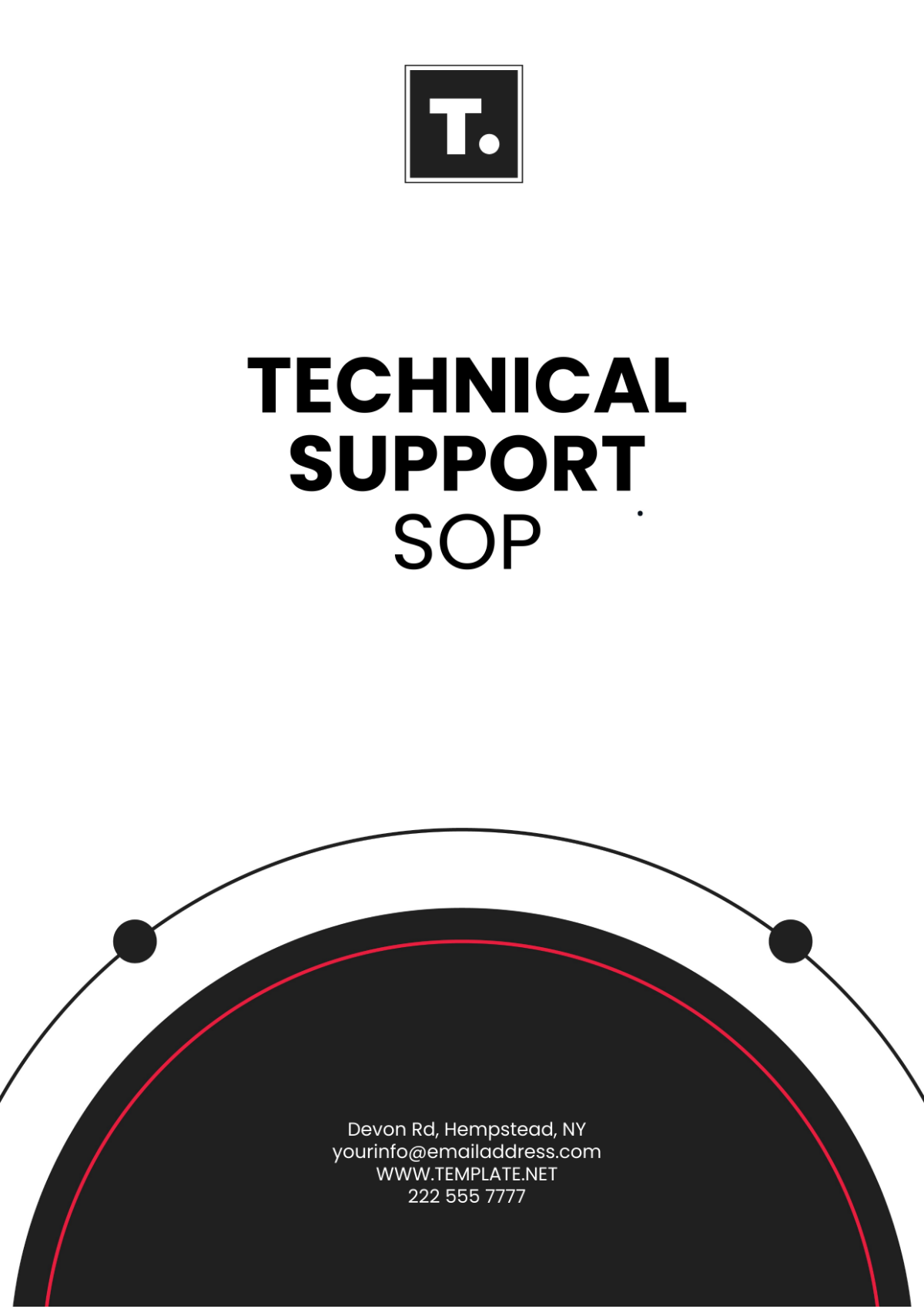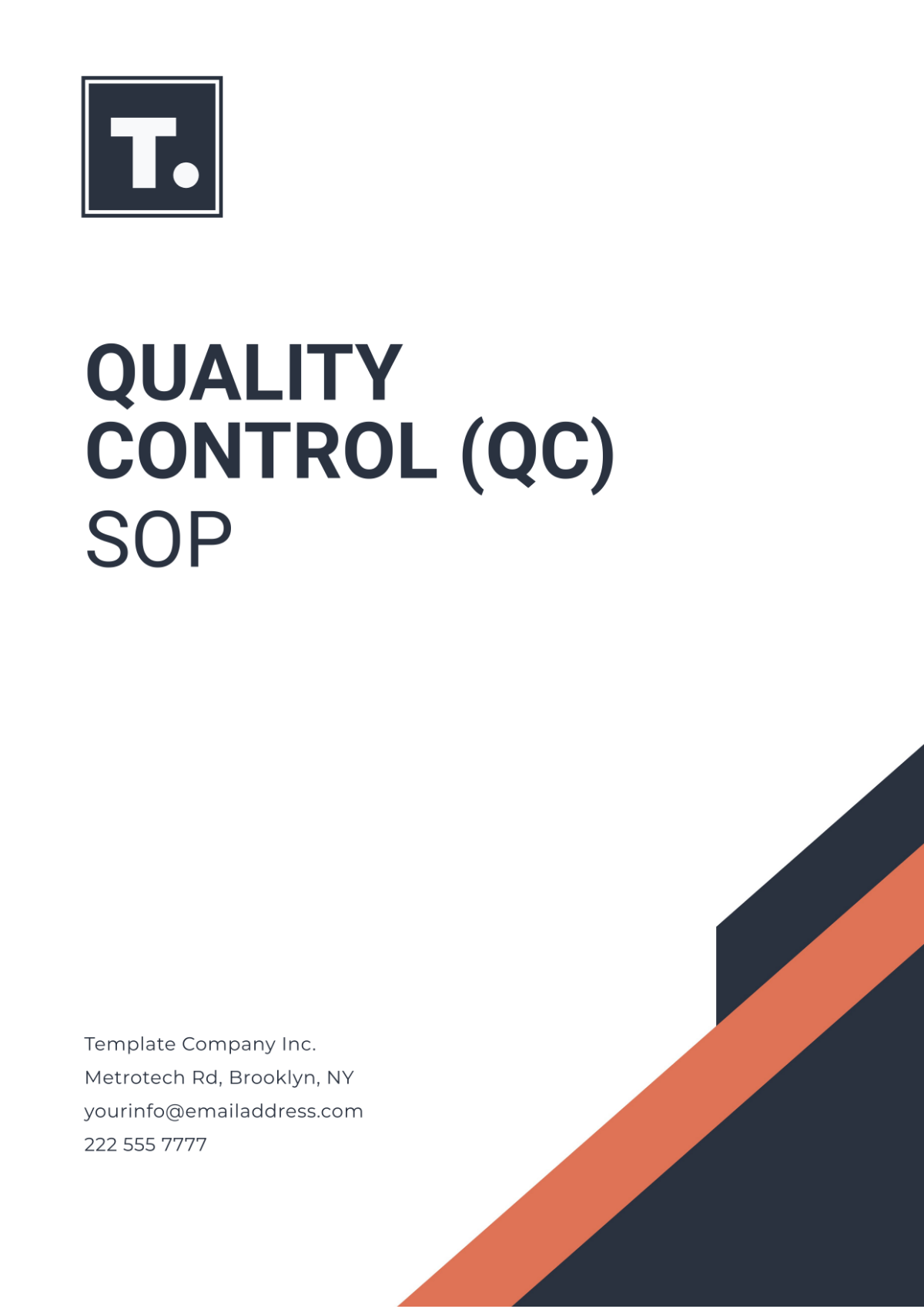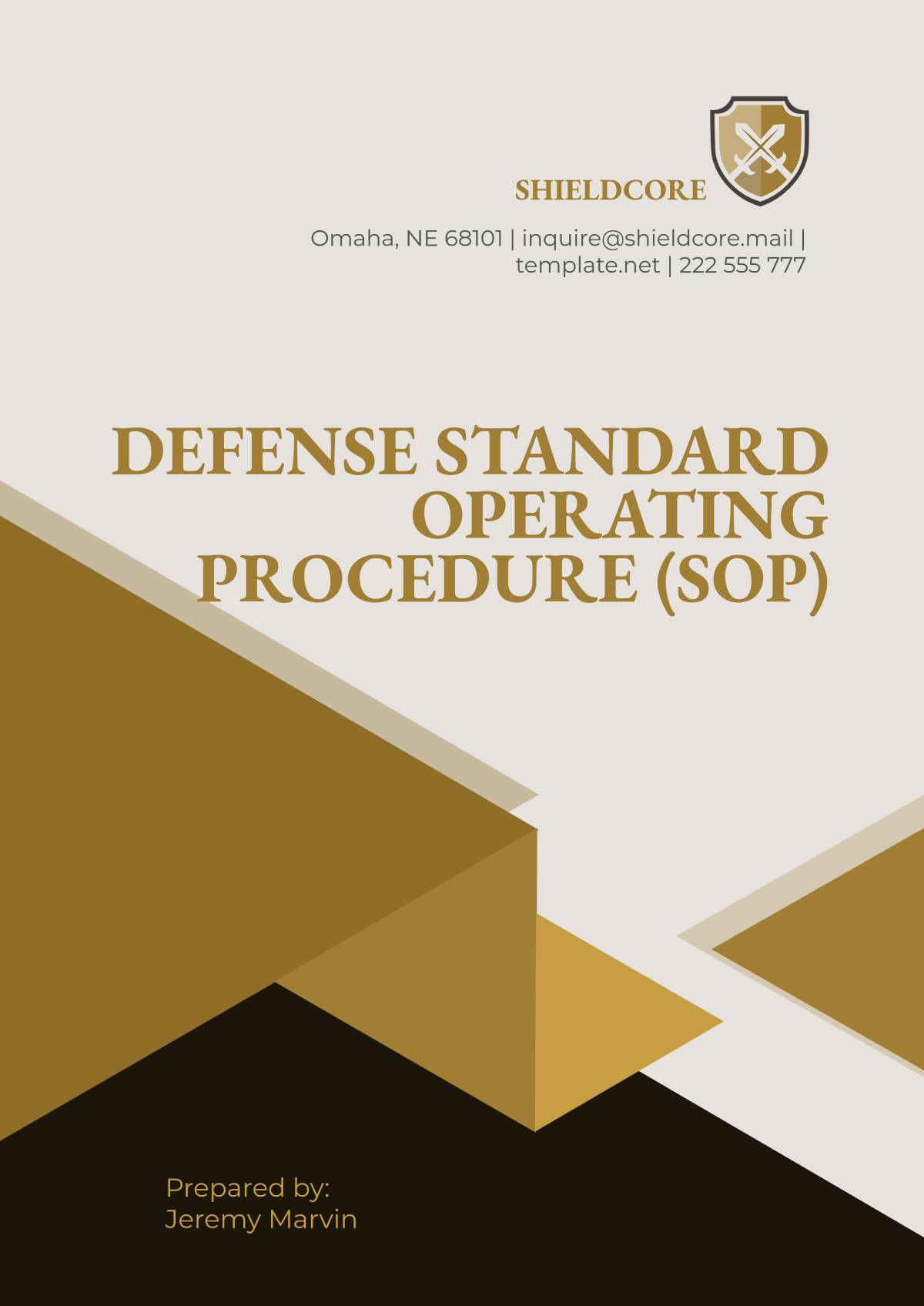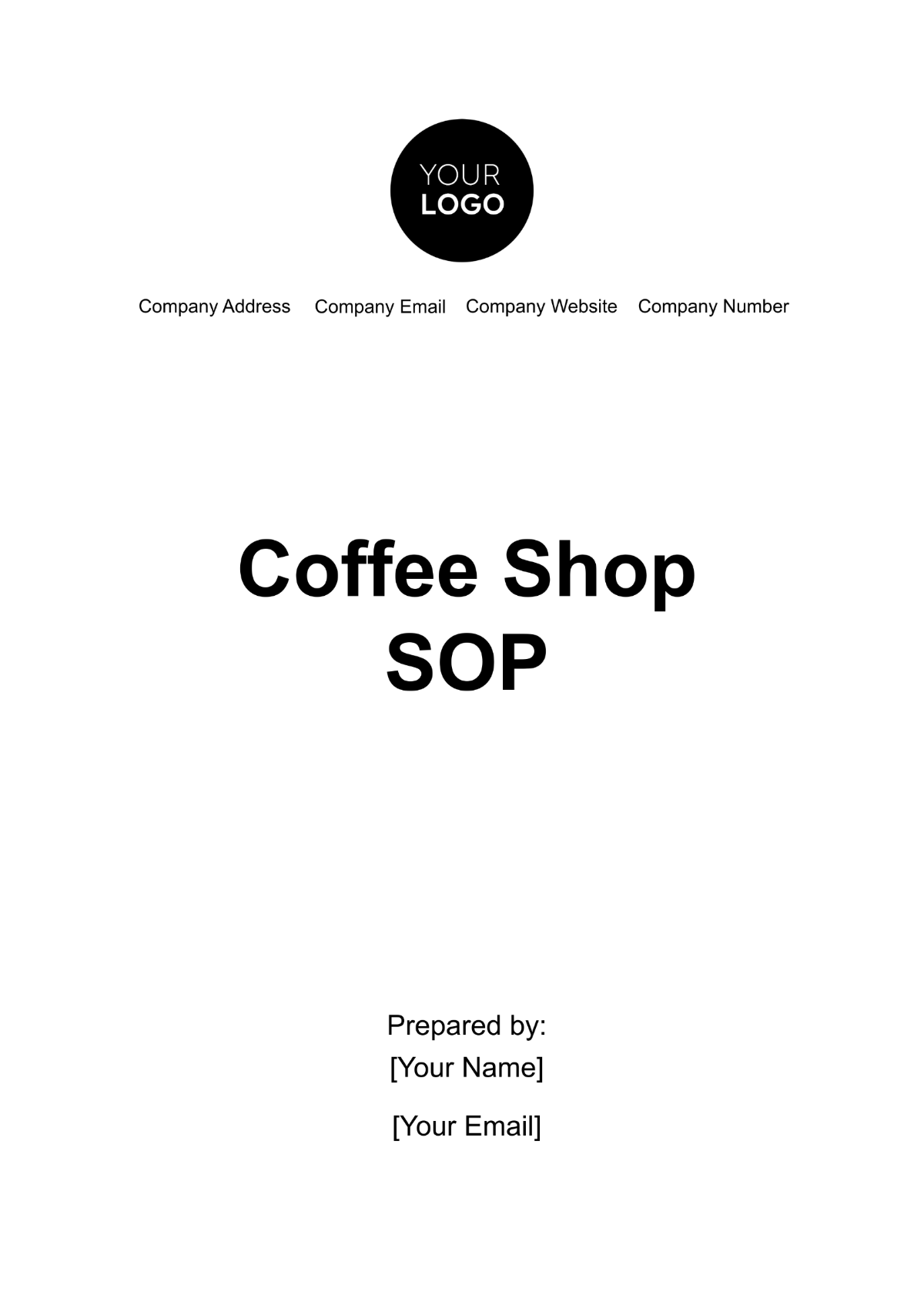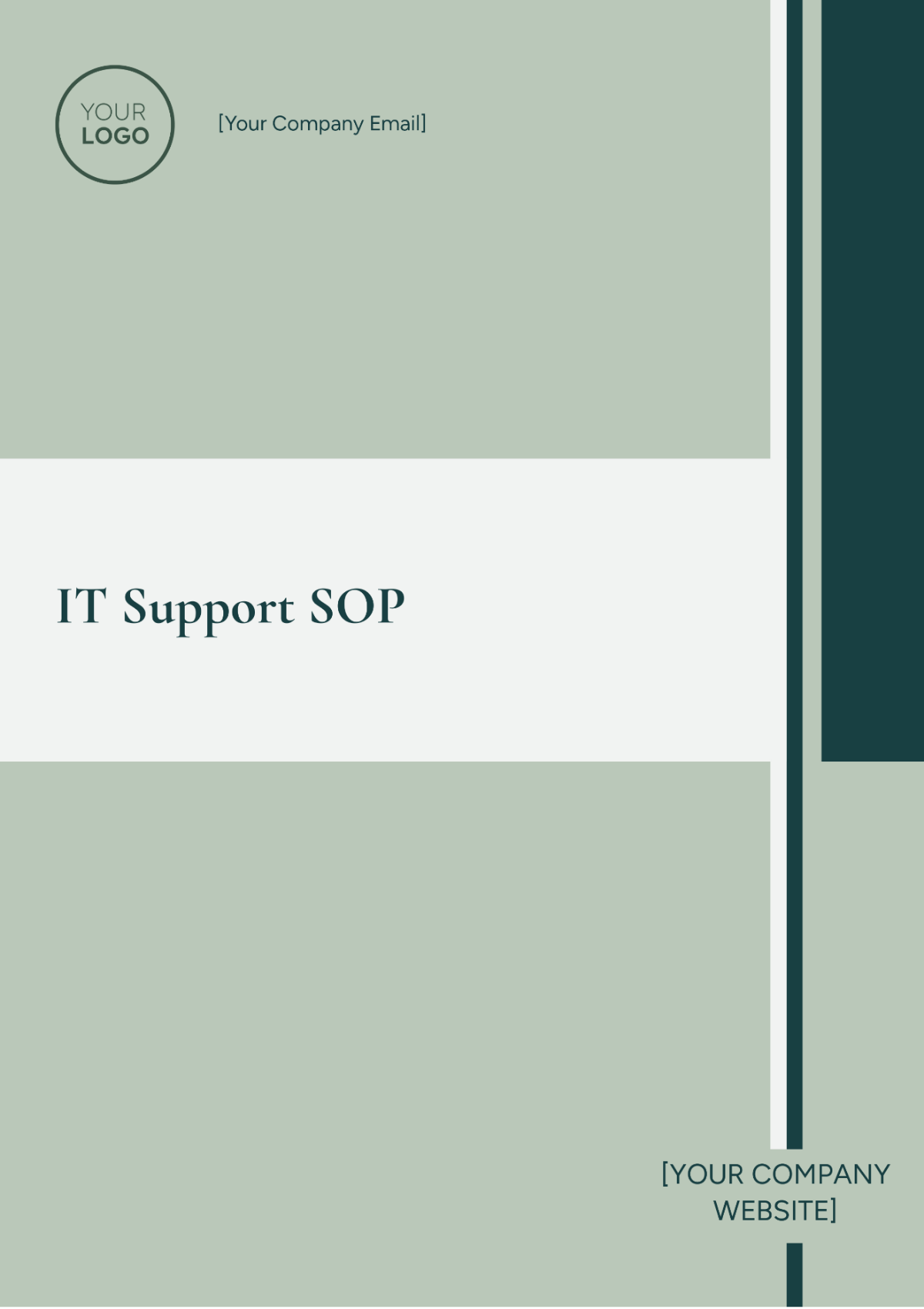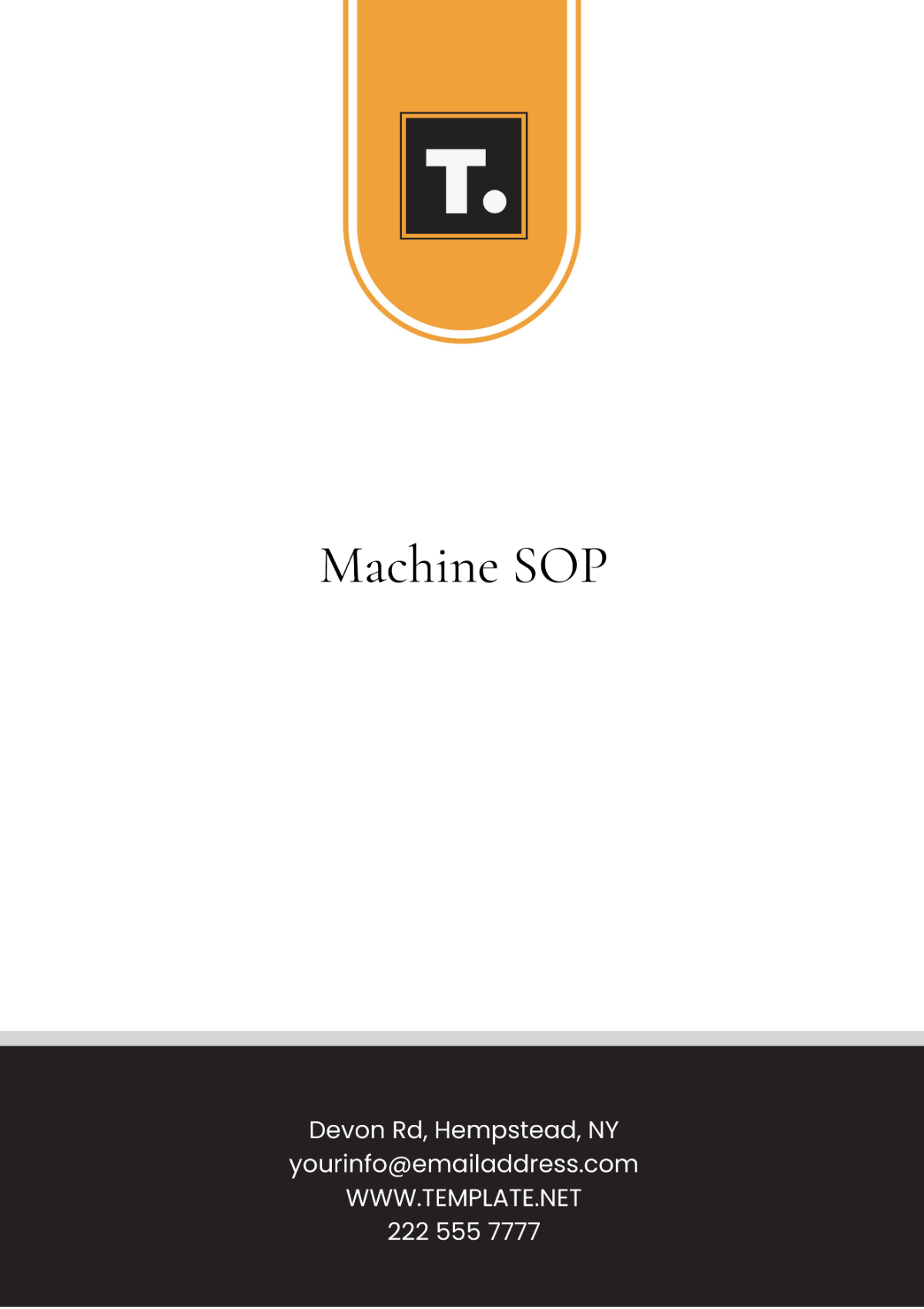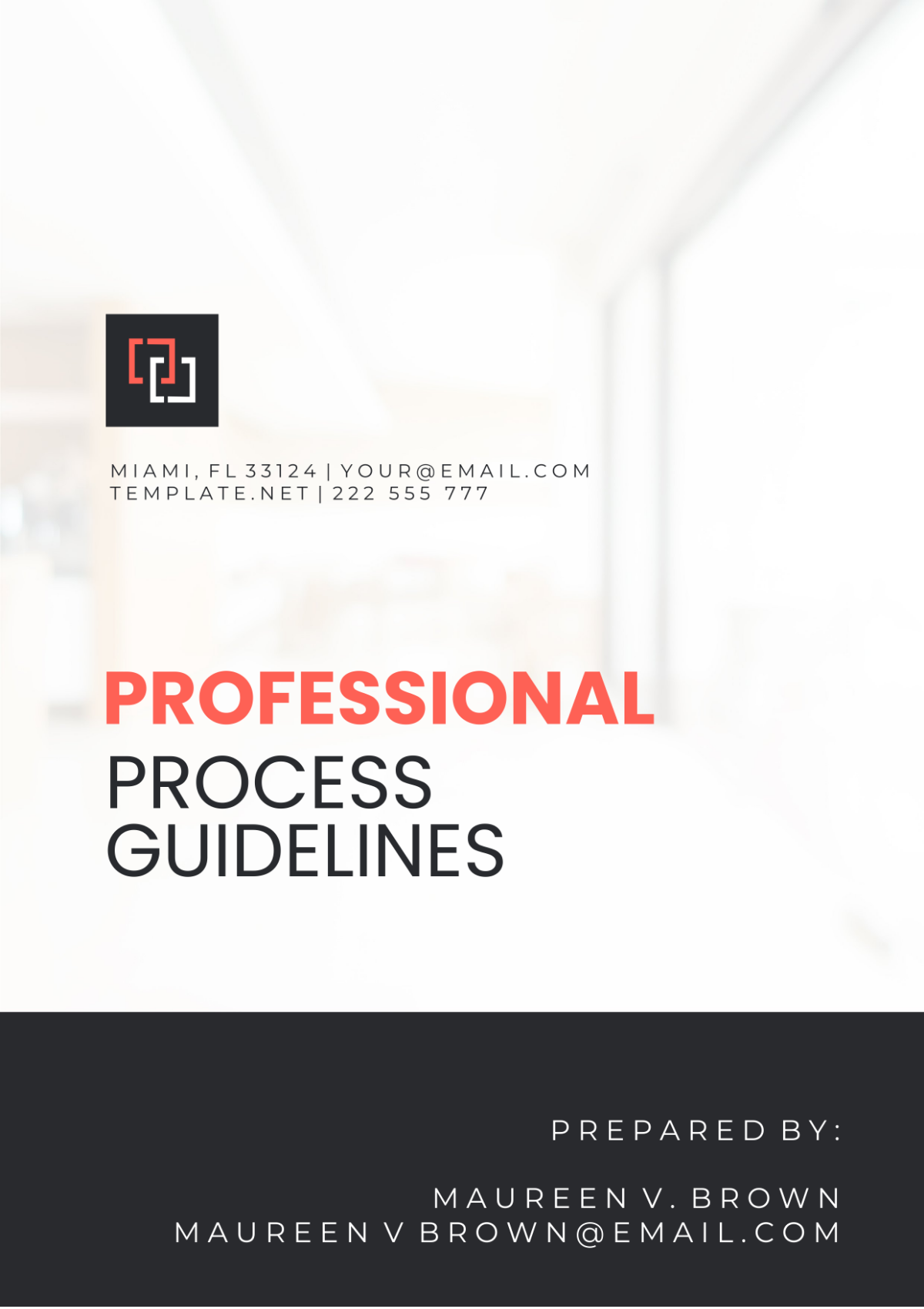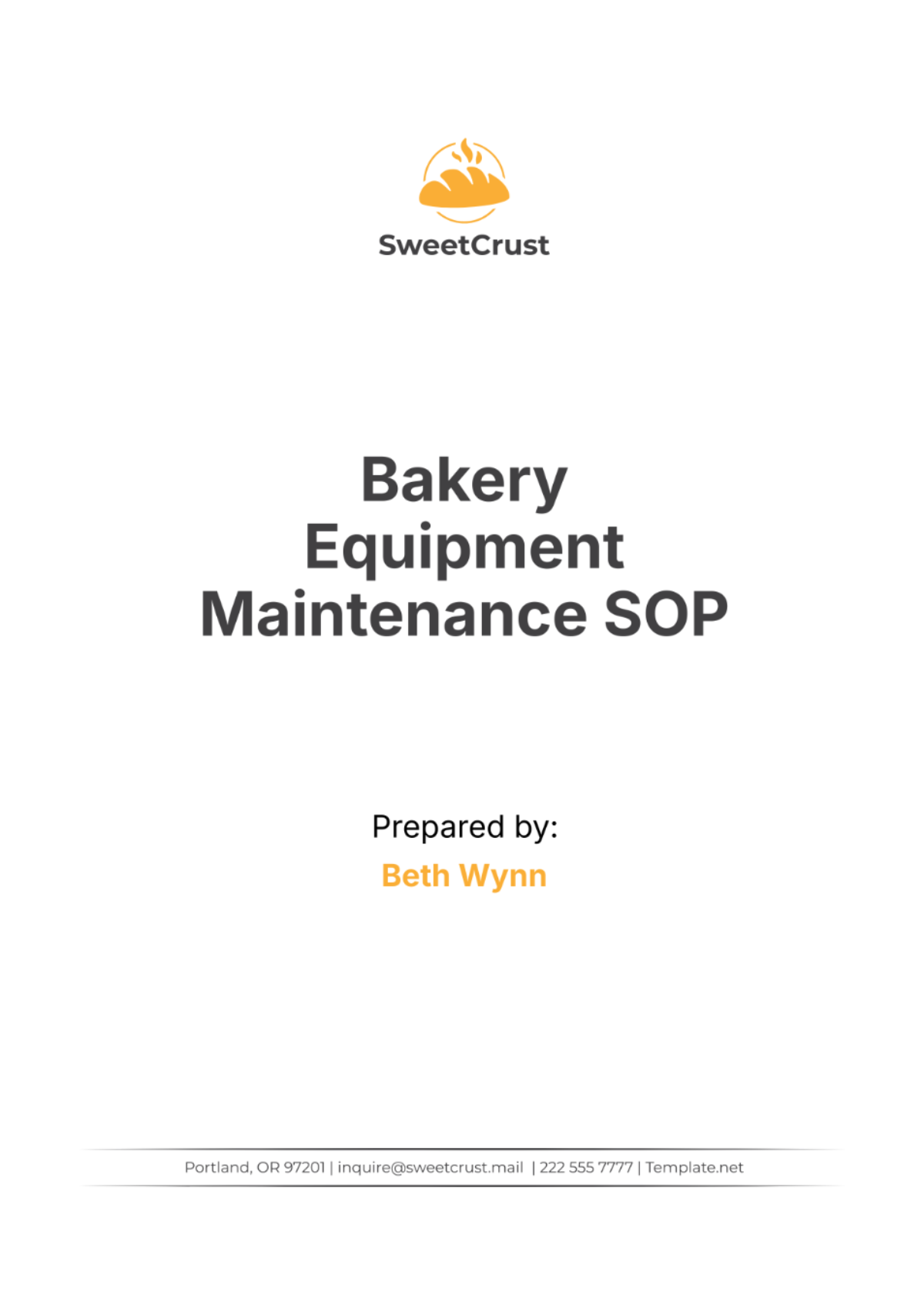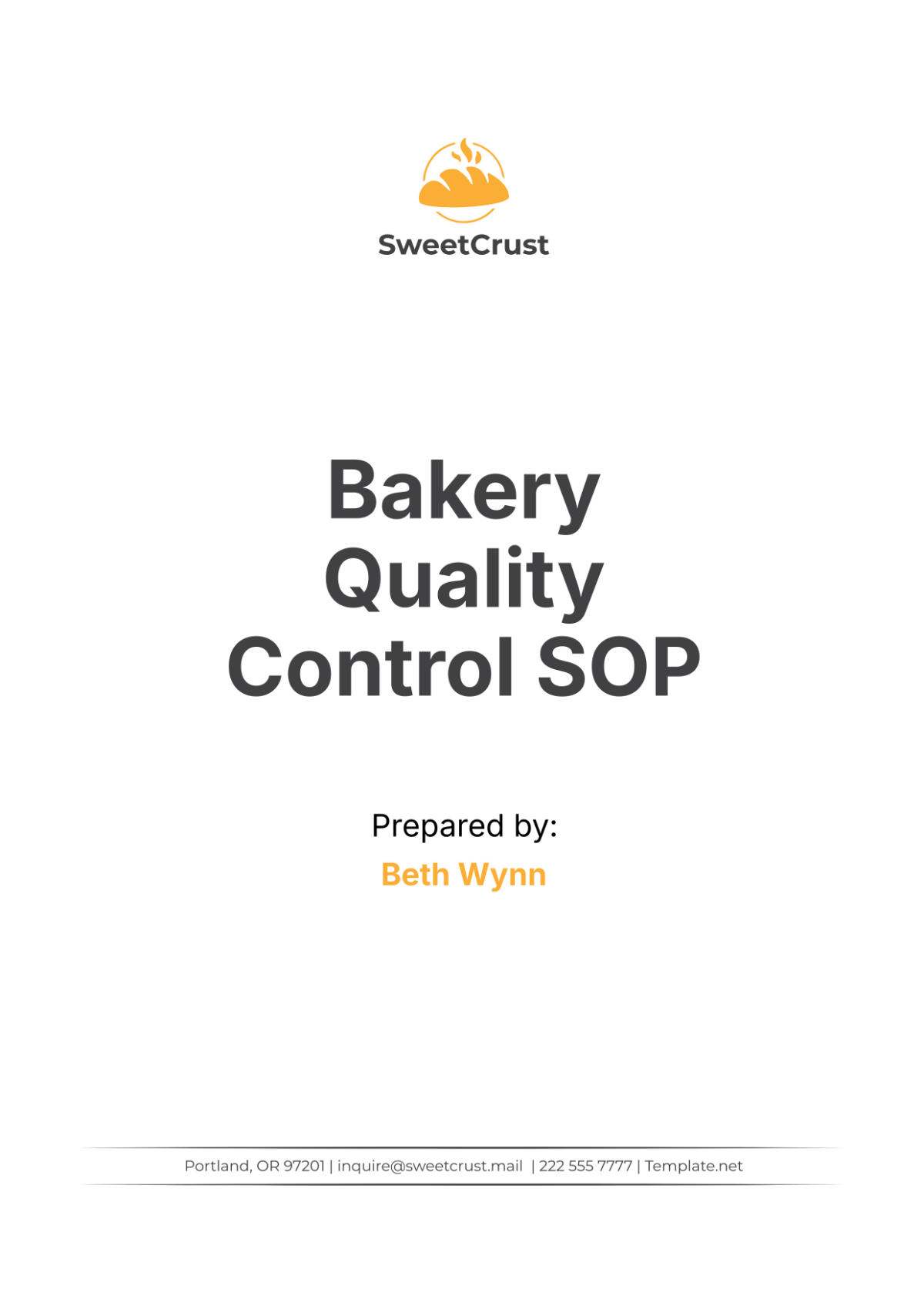Department Store SOP
1. Introduction
1.1 Purpose
The purpose of this Standard Operating Procedure (SOP) is to establish clear and concise guidelines for the day-to-day operations at [Your Company Name]. These procedures are designed to ensure a uniform approach to customer service, financial management, employee training, and compliance with legal standards. By following these procedures, we can enhance operational efficiency, provide an exceptional customer experience, and foster a positive working environment.
1.2 Scope
This SOP applies to all employees, management, and any third-party vendors operating within [Your Company Name]. It encompasses all aspects of store operations, including customer service, inventory management, employee training, financial transactions, and safety protocols. Compliance with these procedures is mandatory and will be monitored regularly to ensure adherence and effectiveness.
1.3 Definitions
To promote clarity and understanding, several key terms are defined as follows:
SOP: A set of written instructions that outline the steps necessary to perform specific tasks or processes.
Employee: Any individual employed by [Your Company Name], including full-time, part-time, and temporary staff.
Customer: Any individual who purchases or inquires about products or services offered by [Your Company Name].
2. Organizational Structure
2.1 Roles and Responsibilities
Understanding the roles and responsibilities within [Your Company Name] is crucial for maintaining efficient operations. Below is an outline of key positions and their corresponding responsibilities:
Position | Responsibilities |
|---|---|
Store Manager | Oversee daily operations, manage staff, ensure customer satisfaction, and report to upper management. |
Assistant Manager | Assist the store manager, supervise staff, and handle daily sales reports. |
Sales Associate | Engage with customers, process transactions, and maintain product knowledge. |
Inventory Specialist | Manage inventory levels, coordinate stock replenishment, and conduct audits. |
Human Resources (HR) | Handle employee recruitment, training, and compliance with labor laws. |
2.1.1 Communication Protocols
Clear communication among employees is essential for successful operations. Regular meetings should be held to discuss updates, address concerns, and promote teamwork. Employees are encouraged to share ideas and suggestions for improving store processes, fostering an inclusive work environment.
2.2 Communication Hierarchy
Effective communication must flow smoothly throughout the organization. The following hierarchy outlines the communication structure:
Store Manager: Primary point of contact for all store-related issues and decisions.
Assistant Manager: Reports directly to the Store Manager and facilitates communication between staff and management.
Sales Associates: Report to the Assistant Manager and communicate customer feedback or issues to the management team.
Inventory Specialist: Works closely with both the Store Manager and Assistant Manager to provide updates on stock levels and inventory concerns.
3. Store Operations
3.1 Opening Procedures
To ensure a smooth start to the day, employees must adhere to specific opening procedures.
3.1.1 Staff Arrival
All staff members must arrive at least [30 minutes] before the store opens to prepare for the day’s operations. This allows time for a team briefing, where the manager will outline the goals for the day, discuss promotions, and assign roles.
3.1.2 Store Setup
Upon arrival, employees should perform the following tasks:
Unlock the Store: Ensure the front and back entrances are unlocked and secure.
Turn on Lights and Equipment: Check that all lights, registers, and electronic displays are functioning properly.
Prepare Sales Floor: Ensure that the sales floor is clean, organized, and properly stocked with products. Employees should restock any low inventory items from the previous day.
3.2 Closing Procedures
Closing the store involves multiple steps to ensure security and proper cash handling.
3.2.1 Final Sales
All transactions should be completed by the designated closing time, ensuring that no customers are left waiting. Employees should politely inform customers of the store’s closing time and encourage them to complete their purchases.
3.2.2 Cash Handling
At the end of the day, cashiers must balance their registers and prepare the cash for deposit.
Counting Cash: Cashiers should count all cash received during the shift and record the total.
Cash Deposit: Once cash is counted, it must be securely placed in the designated cash deposit bag.
3.2.3 Store Lockup
Before leaving, employees must perform the following tasks to secure the store:
Turn Off Equipment: Ensure all lights and electronic devices are turned off.
Lock Doors: Confirm that all doors are securely locked and that the alarm system is activated.
3.3 Customer Service Standards
Providing exceptional customer service is a priority for [Your Company Name]. All employees must adhere to the following service standards:
Greeting Customers: All customers entering the store should be greeted promptly with a friendly welcome.
Assisting Customers: Employees should be available to assist customers with inquiries, product selections, and check-out processes.
Handling Complaints: Any customer complaints must be addressed swiftly and professionally. Employees should listen attentively, apologize if necessary, and find a solution to the issue at hand.
3.4 Inventory Management
Effective inventory management ensures that products are available for customers while minimizing excess stock.
3.4.1 Stock Levels
Regularly monitor stock levels to ensure that popular items are always available. Use inventory management software to track sales trends and adjust orders accordingly.
3.4.2 Inventory Audits
Conduct monthly inventory audits to reconcile physical stock with system records. Identify discrepancies and investigate the causes to prevent future issues.
4. Sales and Promotions
4.1 Sales Strategy
A well-defined sales strategy is crucial for driving revenue at [Your Company Name]. This includes:
Identifying Target Markets: Understand the demographics of customers in the area to tailor products and promotions.
Seasonal Promotions: Plan sales events around holidays and seasonal trends to maximize foot traffic and sales.
4.1.1 Sales Goals
Each department must set monthly sales goals to encourage performance and accountability. These goals should be specific, measurable, achievable, relevant, and time-bound (SMART).
Department | Monthly Sales Goal ($) | Actual Sales ($) | Variance ($) | Notes |
|---|---|---|---|---|
Electronics | [50,000] | [45,000] | [-5,000] | Need to promote new products more. |
Clothing | [40,000] | [50,000] | [+10,000] | Successful promotion; consider repeating it. |
Home Goods | [30,000] | [25,000] | [-5,000] | Need to increase advertising efforts. |
4.2 Promotional Activities
Promotions play a vital role in attracting customers and driving sales. Various activities should be utilized:
In-Store Promotions: Regularly feature in-store promotions, such as discounts or buy-one-get-one offers, to encourage impulse purchases.
Online Marketing Campaigns: Utilize social media and email marketing to inform customers of upcoming promotions and special events.
5. Safety and Security
5.1 Store Security Procedures
Maintaining a secure environment for both employees and customers is crucial. The following measures should be implemented:
5.1.1 Surveillance Systems
Ensure that all areas of the store are monitored by security cameras. Regularly check the functionality of the cameras and review footage as necessary.
5.1.2 Incident Reporting
All incidents, including theft, accidents, and any suspicious behavior, must be reported immediately. Employees should complete an incident report and submit it to the store manager for further investigation.
5.2 Emergency Response Plan
[Your Company Name] has established an emergency response plan to ensure safety in the event of unforeseen situations, such as natural disasters or medical emergencies.
5.2.1 Emergency Contacts
Maintain a list of emergency contacts, including local police, fire department, and medical facilities, readily accessible to all employees.
5.2.2 Emergency Drills
Conduct regular emergency drills to familiarize employees with evacuation procedures and ensure they know how to respond in emergencies. All staff members should participate in these drills.
6. Financial Management
6.1 Cash Handling Procedures
Effective cash handling is essential to maintain financial integrity and prevent losses. All employees must adhere to the following cash handling procedures:
Daily Cash Reconciliation: At the end of each day, cashiers must reconcile their registers to ensure that cash on hand matches sales records.
Secure Cash Storage: Cash should be stored in a safe place during business hours and deposited at the bank according to a predetermined schedule.
6.2 Financial Reporting
Accurate financial reporting is essential for evaluating the performance of [Your Company Name]. Financial reports should be generated monthly, including:
Sales Reports: Overview of total sales, broken down by department and product category.
Expense Reports: Documentation of all business expenses incurred during the reporting period.
Profit and Loss Statements: Analysis of revenues and expenses to determine overall profitability.
7. Employee Training and Development
7.1 Initial Employee Training
All new employees must undergo an initial training program to familiarize themselves with the company culture, policies, and procedures. This program should include:
Company Orientation: Overview of [Your Company Name], its mission, values, and organizational structure.
Job-Specific Training: Hands-on training tailored to the employee's role, ensuring they understand their responsibilities and expectations.
7.2 Continuous Professional Development
[Your Company Name] encourages ongoing professional development through workshops, seminars, and online courses. Employees should be provided with opportunities to enhance their skills and advance in their careers. Regular performance evaluations will help identify areas for improvement and additional training needs.
8. Customer Feedback and Improvement
8.1 Gathering Feedback
Customer feedback is essential for improving products and services. Several methods should be used to gather feedback:
Surveys: Distribute surveys via email or in-store to collect customer opinions on their shopping experience.
Social Media Monitoring: Regularly monitor social media platforms for comments and reviews to understand customer sentiment.
8.2 Analyzing Feedback
Feedback should be reviewed regularly to identify trends and areas for improvement. Monthly meetings should be held to discuss customer feedback and brainstorm potential changes to enhance the customer experience.
9. Compliance and Legal Requirements
9.1 Health and Safety Compliance
All employees must adhere to health and safety regulations to ensure a safe working environment. This includes:
Regular Safety Audits: Conduct safety audits to identify potential hazards and implement corrective actions.
Health Standards: Comply with local health regulations related to food handling, sanitation, and employee health.
9.2 Labor Law Compliance
[Your Company Name] is committed to complying with all labor laws and regulations. Employees must be aware of their rights and responsibilities, including:
Fair Labor Standards: Adhere to wage and hour laws, ensuring that all employees are compensated fairly for their work.
Workplace Rights: Promote a workplace that respects employee rights and fosters a culture of inclusivity and respect.


